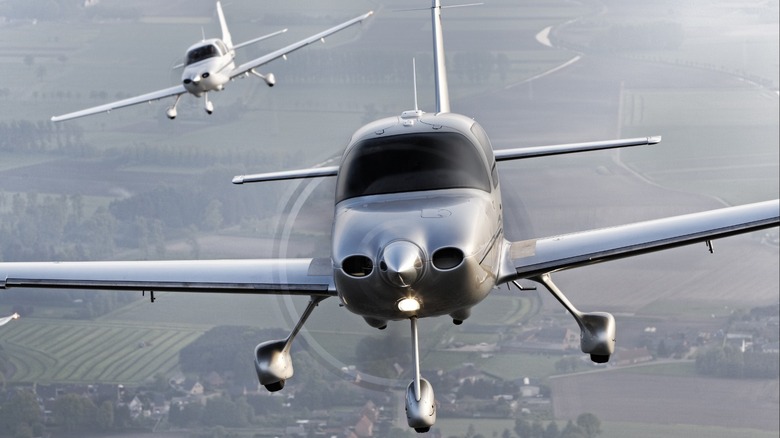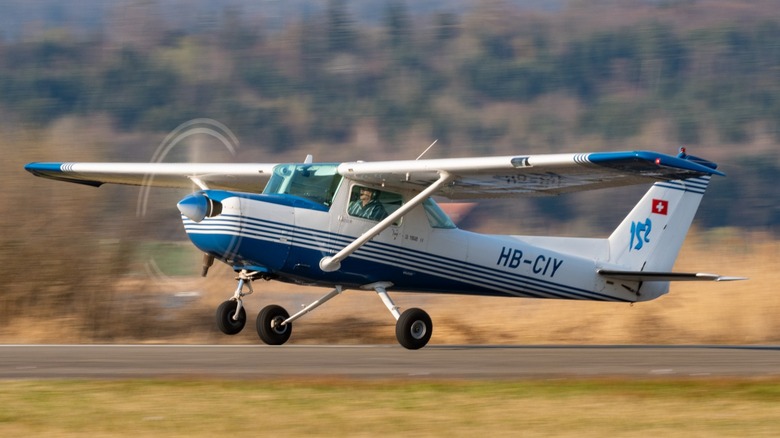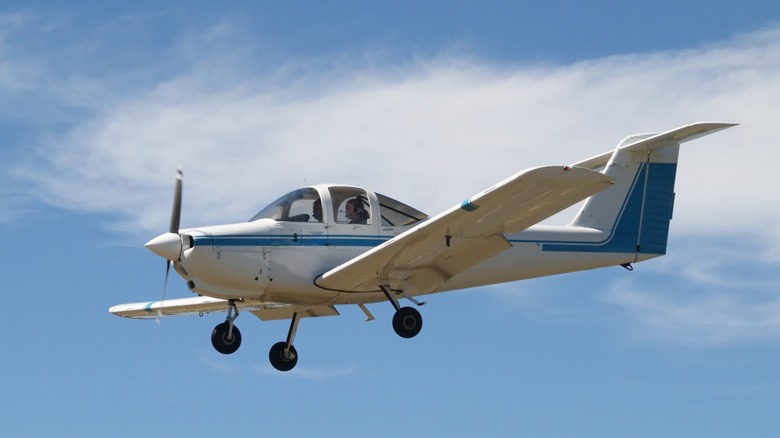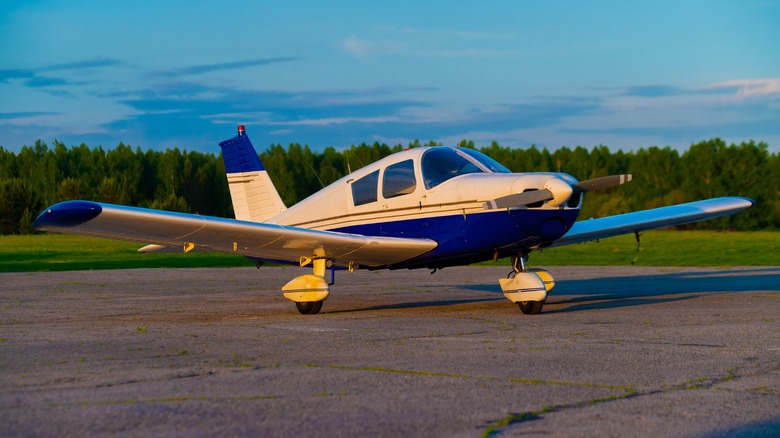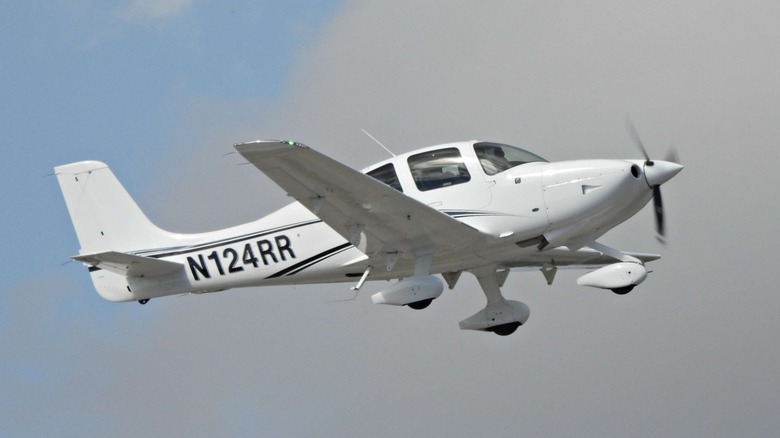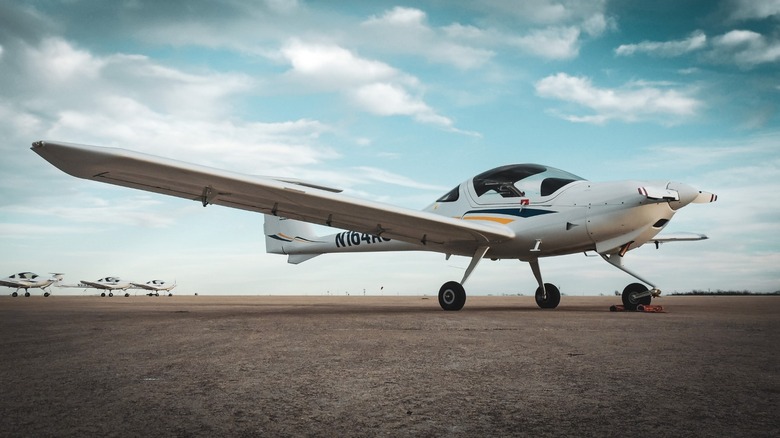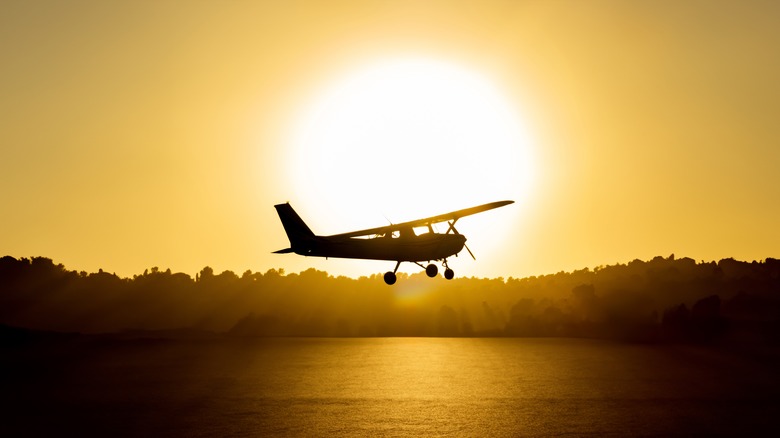5 Of The Best Planes For Getting Your Private Pilot's License
Many dream of learning how to fly, and a few lucky ones among us have the chance to do it. However, flying isn't just sitting in a classroom and graduating with a degree. Instead, it requires hours of flight experience in a cockpit.
The FAA requires students to log 40 flying hours to apply for a private pilot certificate, with the hours broken down into at least 20 hours of flight training with a licensed instructor, 10 hours of solo flight, three hours of cross-country flight, and three hours of instrument time.
While you can accomplish all these in a flying school or renting out an hourly plane, some student pilots may consider buying a plane instead. That way, they can fly whenever they want, have reduced hourly costs, and even rent it out to other pilot hopefuls in the future.
So, if you plan to earn a pilot's license and have a few extra dollars to put into your aircraft, these are some of the best beginner-friendly planes for building your time and experience.
Cessna 152 / Cessna 172 Skyhawk
Cessna planes are among the most popular single-engine planes you can get. The Cessna 152 is also one of the cheapest planes you can buy today, although it's not available new. Nevertheless, its large production number (23,902 for the older 150s and 7,593 for the newer 152s) means you can easily find it used, and there are plenty of parts and people to service your plane.
Furthermore, you can upgrade the dials and gauges on these older Cessnas to Garmin digital displays, just like in the Cessna 152 I flew during my training days. That means you can get used to flying in a glass cockpit, even flying a nearly 40-year-old plane.
Cessna 152s could go from $50,000 to above $100,000, depending on the engine and avionics onboard. But if you want a new plane, you can't go wrong with a factory-fresh Cessna 172 starting at roughly $400,000. You will get a brand-new aircraft at this price, but if you want modern avionics, air conditioning, and other creature comforts, be prepared to shell out over half a million dollars.
Piper PA-38 Tomahawk
The Piper PA-38 Tomahawk is a light trainer aircraft with an undeserved reputation. Some call it the "Traumahawk" because of a rumored unusual spin characteristic. However, an in-depth investigation by Aviation Safety Magazine found that is untrue — at least for the Tomahawk they flew.
The low-wing design enhances the ground effect with landing, but it can block the view of the runway, making it challenging for a new pilot. It also doesn't have the 'Both' fuel tank selector, meaning the plane will only consume fuel from either the left or right wing tank. So, if you want to keep your plane in balance, you need to be mindful of which fuel tank you're using and for how long.
The low-wing design makes it tough to climb in and out of the cockpit. Its bubble canopy can make it hotter inside the cockpit, especially if you're taxiing in and out of a crowded airport or flying on a bright, sunny day (don't forget to wear sunscreen).
Nevertheless, the Tomahawk is an excellent trainer plane if you're up for an adventure. Its flight performance is similar to that of the 152, but it has a roomier cabin. Although the 152 is easier to fly, you'll get more experience and have better airmanship as you will learn to monitor the fuel consumption for each fuel tank on the Piper. If you plan to transition to a larger plane (or even an airliner) in the future, the Tomahawk is a great pick.
Piper PA-28 Cherokee
If you don't want something typical but need a budget-friendly option, consider the Cherokee. This single-engine low-wing plane is a popular alternative to the Cessna among flight schools, and you can even get a new one from Piper specifically made for training.
Just like the Cessna 152 / 172 Skyhawk, the PA-28 is easy to fly and maintain. Furthermore, its low-wing design makes it easy to fuel as you can easily reach the fuel intakes on the top of the wings, which is crucial for pilot-owners who operate their own plane. And because its fixed main landing gears are placed wide apart under the wings, these planes are far more stable than the high-wing Cessnas on the ground, making them easier to taxi during windy conditions.
You can get a brand-new Piper PA-28 (now called the Piper Archer) from the factory today, starting at $201,400. You can also get the diesel-powered version of this aircraft for more efficiency and flexibility. But if you want to save a buck or two, consider getting a used Cherokee; their prices range from $50,000 to more than $135,000. However, be sure to have an expert mechanic with you when looking at planes to ensure you know what you're getting.
Cirrus SR20
Aspiring pilots who want all the available safety options in their hands would love the Cirrus SR-22. That's because this plane is the only one in our list equipped with CAPS or the Cirrus Airframe Parachute System. If you've lost situational awareness or control of your aircraft, you can pull the CAPS handle as long as you're under 140 knots, and a parachute will deploy to bring you back safely to the ground.
Aside from that, the Cirrus SR series is a relatively new design, having been produced in 1999 (compared to 1958 for the Cessna 152, 1960 for the Cherokee, and 1978 for the Tomahawk). It features a full glass cockpit straight from the factory, several creature comforts like USB-C for charging your gadgets on long flights, and a powerful 200 horsepower Continental engine.
With all these features, the Cirrus SR-20 is definitely an expensive plane, with a brand-new base model SR20 coming in at $579,900 in 2023. But you do get a three-day transition training package at this price, so you can quickly fly it if you have already earned your private pilot's license on other aircraft.
But aside from buying a plane from Cirrus, you can actually earn your wings with the company via its flight training program. So, if you want to hit two birds with one stone and have deep pockets, consider getting a Cirrus SR20 (or the faster yet more expensive SR22/SR22T). This will serve as the perfect training plane and a comfortable personal plane.
Diamond DA20 Katana
The Diamond DA20 Katana is another relatively new design, introduced only in 1992. But despite its young age, it's already popular among established flight schools. The flight training programs of some major airlines, like the EVA Flight Training Academy of EVA Air and the Qantas Group Pilot Academy, also use the DA20 or its larger DA40 variant for their students.
The DA20's modern design and low price make it popular among training institutions. Unlike the SR20, which costs nearly half a million dollars, the DA20 Katana starts at just $280,000.
Nevertheless, you still get a lot of aircraft for that price. It has a 122-knot cruising speed and a 703-nautical mile range. It uses modern Garmin G500TXi avionics, and you can pick between a 100 horsepower Bombardier Rotax Sport engine or a 125 horsepower fuel-injected Continental IO-240 engine to power your plane.
Like the Tomahawk, the DA20 uses a canopy design for improved all-around visibility. However, this plane is unique because its canopy opens like that of Lockheed Martin's best jets – the F-22 Raptor or the F-16 Fighting Falcon.
If you would like to learn how to fly and have the money, buying a new or used plane can be a more cost-efficient way of getting your private pilot's license. That's because you can fly anytime, don't have to compete against others for schedules, and you can eventually use your training plane as your personal aircraft in the future. Or, if you're more enterprising, you can even rent it out to other pilots who want to build their hours or fly for fun.
Methodology and experience
I started flight training in 2019 and received my private pilot license at the end of 2020. I did most of my basic flight training in the Cessna 152 and found it a completely easy and forgiving aircraft to fly.
I also started familiarizing myself with the Cessna 172 and the Piper Tomahawk until the pandemic hit, and I had to pause my training. Nevertheless, I flew on the Piper Cherokee with a friend during and after the pandemic.
